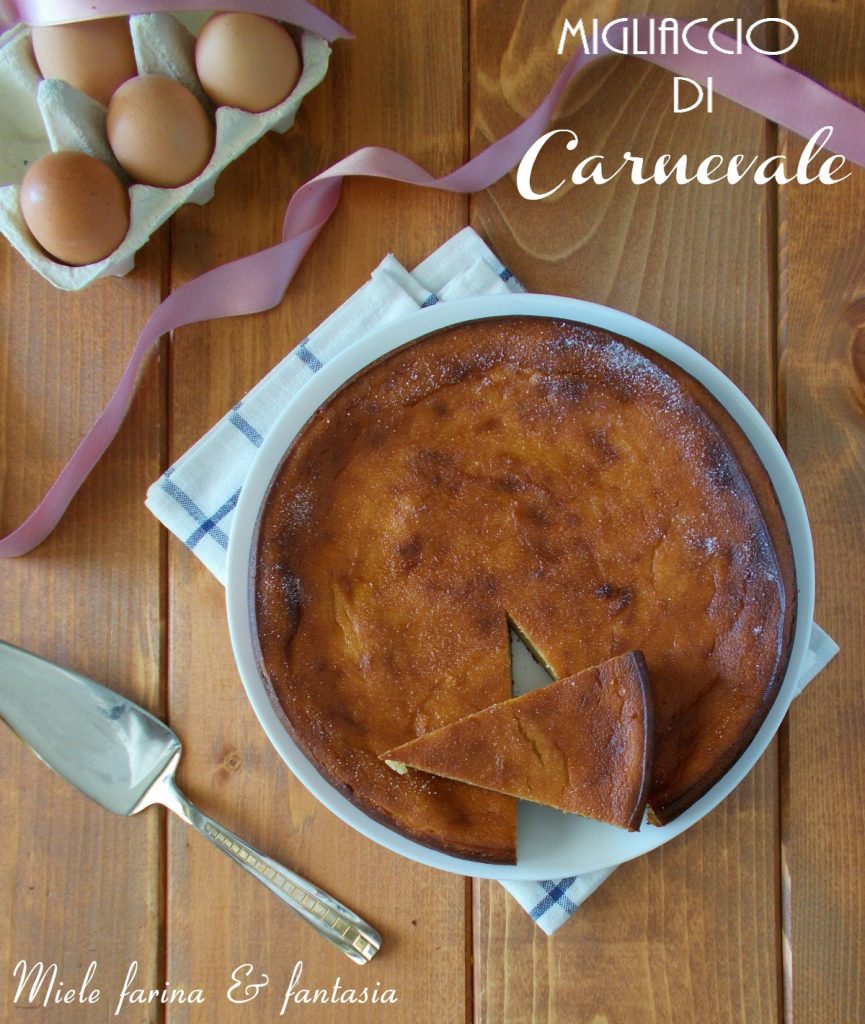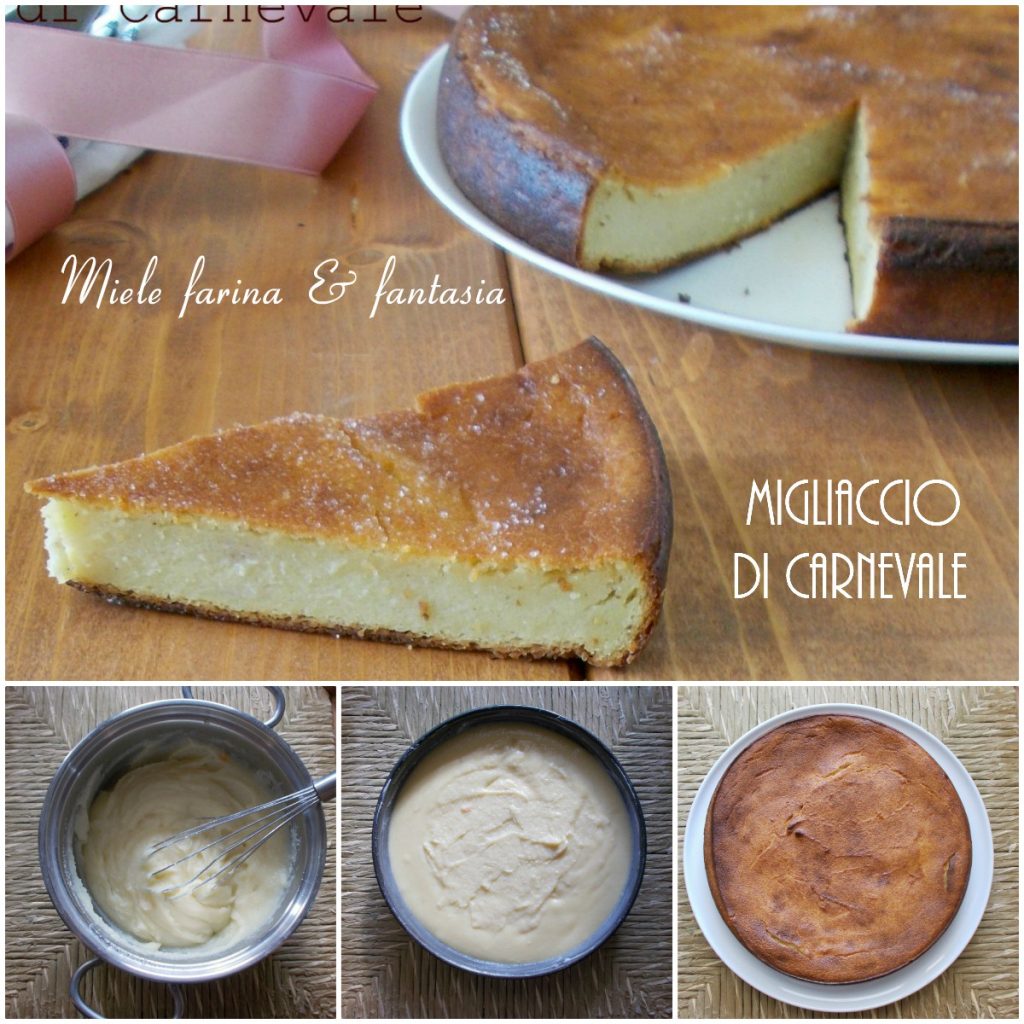Have you ever tasted Carnival migliaccio? It’s a typical sweet preparation from Campania, mainly based on semolina and ricotta. The so-called “semolina” used to prepare the migliaccio is nothing but re-milled durum wheat semolina with a coarse grain, usually sold in packages of 500 grams, not to be confused with semolina flour (re-milled or not) which has an impalpable, very fine consistency. The taste of this dessert, its soft, compact, and moist consistency, and its aroma are very reminiscent of the filling of the famous Neapolitan “sfogliatelle.” It is a very rich and calorific recipe, but it’s worth tasting because it’s a triumph of fragrances and flavors. Every family has its own recipe, where the quantities of this or that ingredient vary. This one I propose to you is my mother-in-law’s infallible recipe that I also prepare.
Happy reading

- Difficulty: Very easy
- Cost: Medium
- Preparation time: 40 Minutes
- Portions: 2 migliacci of 10 inches
- Cooking methods: Oven
- Cuisine: Italian
Ingredients
- 4 1/4 cups Semolina
- 4 1/4 cups Milk
- 4 1/4 cups Water
- 35 oz Sugar
- 5 tbsp Butter
- 2 1/4 cups Cow's ricotta
- 1 pinch Fine salt
- 6 Eggs (medium whole)
- 3 packets Vanillin (or 1 scant teaspoon of vanilla paste)
- 1/4 teaspoon Ground cinnamon
- 1 teaspoon Orange blossom water
- as needed Lemon zest
- as needed Butter for the pan
Tools
- 2 Pans B08XZ9Q9DY
Preparation
With these quantities, we will obtain 2 migliacci; or 1 migliaccio by halving the quantities of all ingredients.
As for the molds, the correct size is 11 inches in diameter, and both springform pans and the typical Neapolitan pastiera aluminum pans, which are 1.5 inches high, are suitable.
Let’s start preparing our migliacci.
In a large pot, heat together water, grated lemon zest, milk, salt, sugar, and butter. Cook over low heat and stir until the mixture is warm (but not boiling).
At this point, slowly pour in the semolina in a fountain-like manner and continuously stir with a steel whisk to avoid lumps, just like you do with polenta. Let it cook over low heat, stirring often, until all ingredients are perfectly combined and the liquid has been completely absorbed. We should obtain a mixture with a very soft yet compact consistency.
Turn off the heat and let it cool slightly for about 20 minutes (do not let it cool completely), occasionally stirring with the steel whisk.
Meanwhile, in a bowl, mix together the ricotta (drained of any excess whey), vanillin or vanilla paste, cinnamon, orange blossom water, and 3 whole eggs, and add them to the warmed semolina mixture.
Using electric beaters, mix to perfectly combine the two mixtures.
Having done this, we will add, one at a time, the other eggs (and only after one egg has been absorbed, will we add another), until we achieve a compact and soft consistency at the same time, easy to mix, not hard. Since eggs never have the same weight, if you notice that the mixture is already very soft after the fourth or fifth egg, do not add the sixth, risking it may become liquid.
Generously butter the pans and pour in the mixture, leveling it with a spoon (it should have a thickness of a maximum of 1.5 fingers, like the slice in the photo) and bake in a preheated oven, midway up, at 392°F for about 60 minutes (depending on your oven). The migliaccio is ready when both the base and the surface are caramel-colored. Take it out of the oven, let it cool, and rest for at least one day before dusting it with plenty of powdered sugar and eating it.
The migliaccio can be stored at room temperature as long as it’s not hot, otherwise, keep it in the fridge in a cake holder.
Bon appetit


